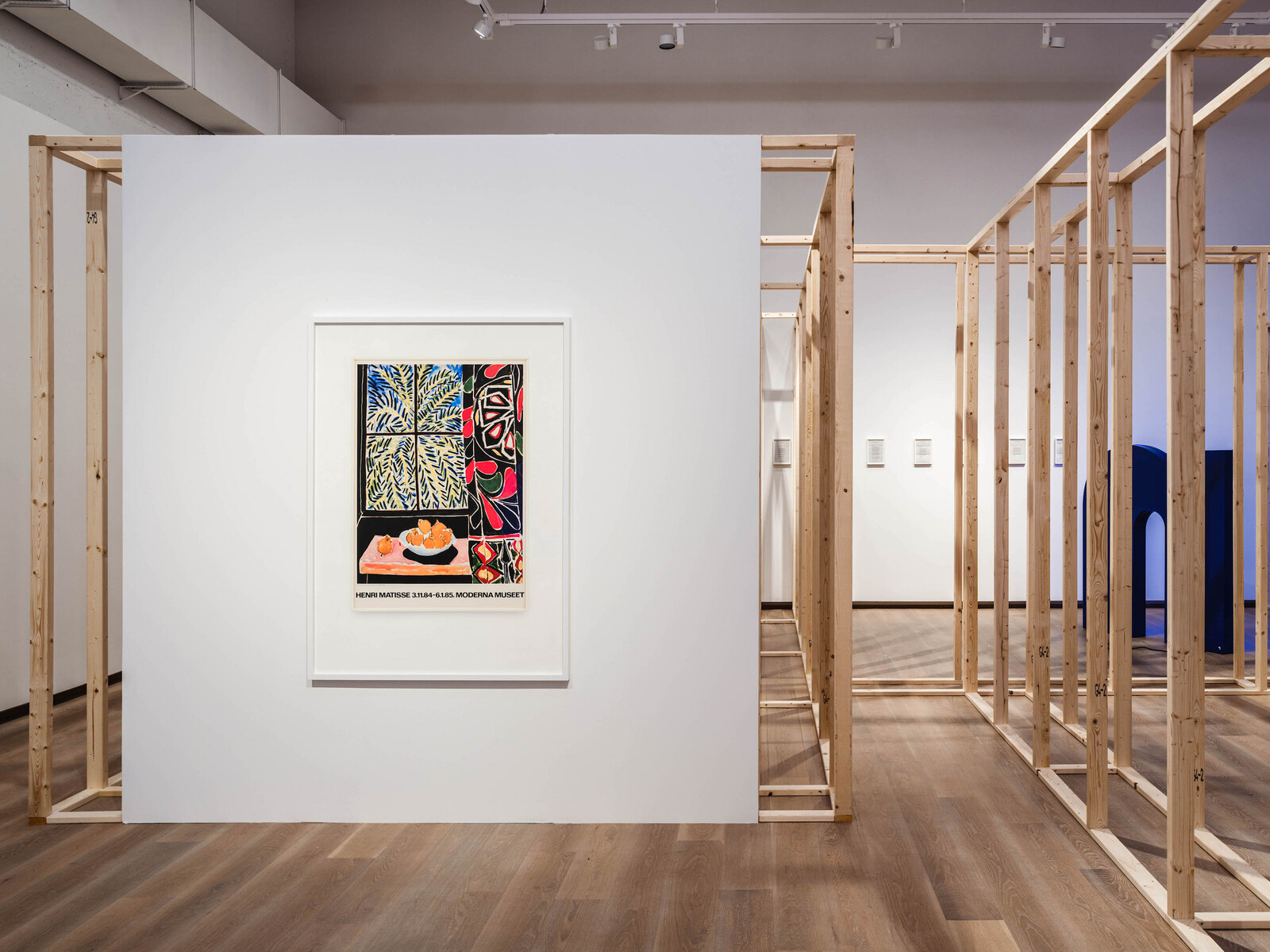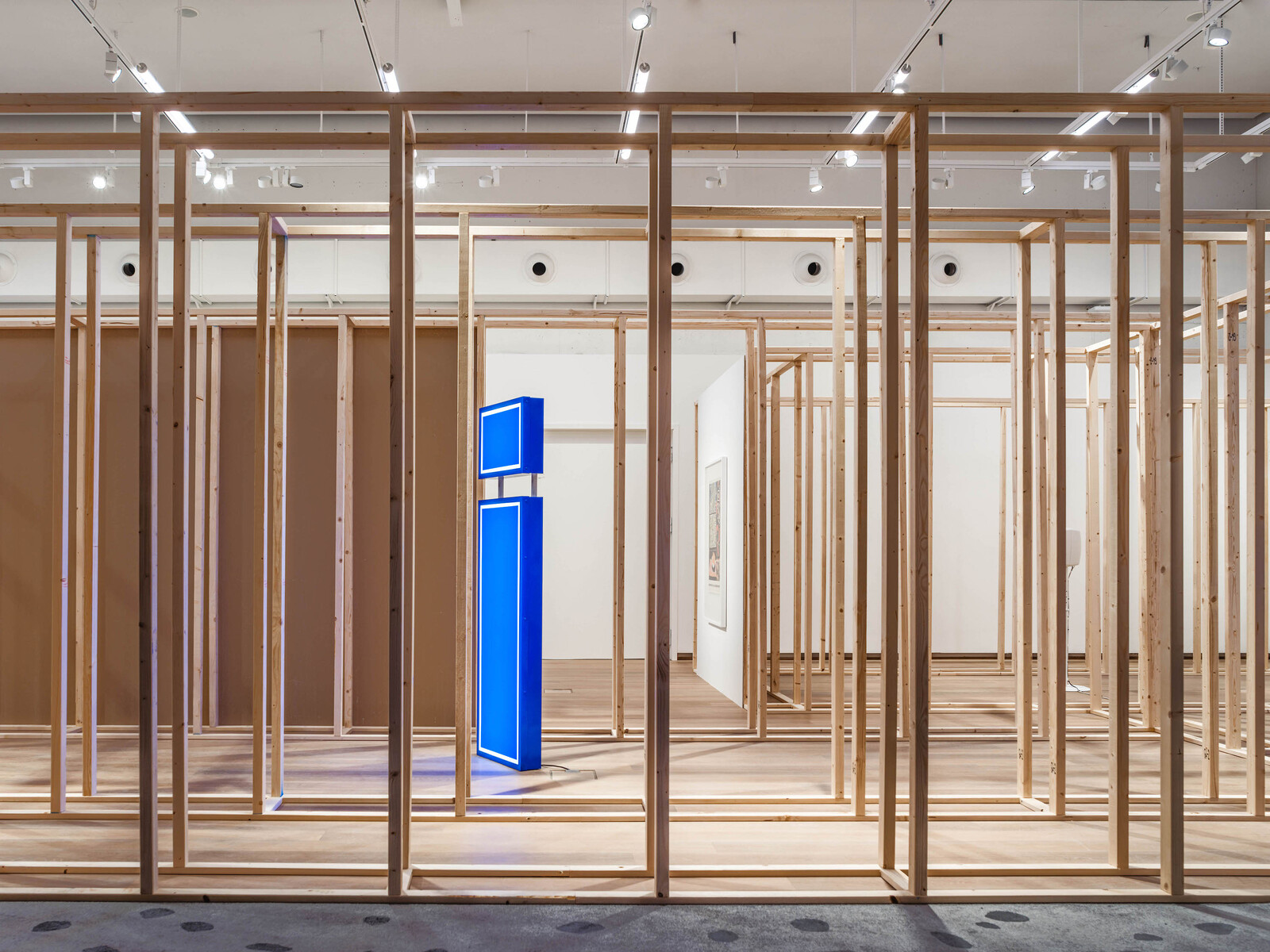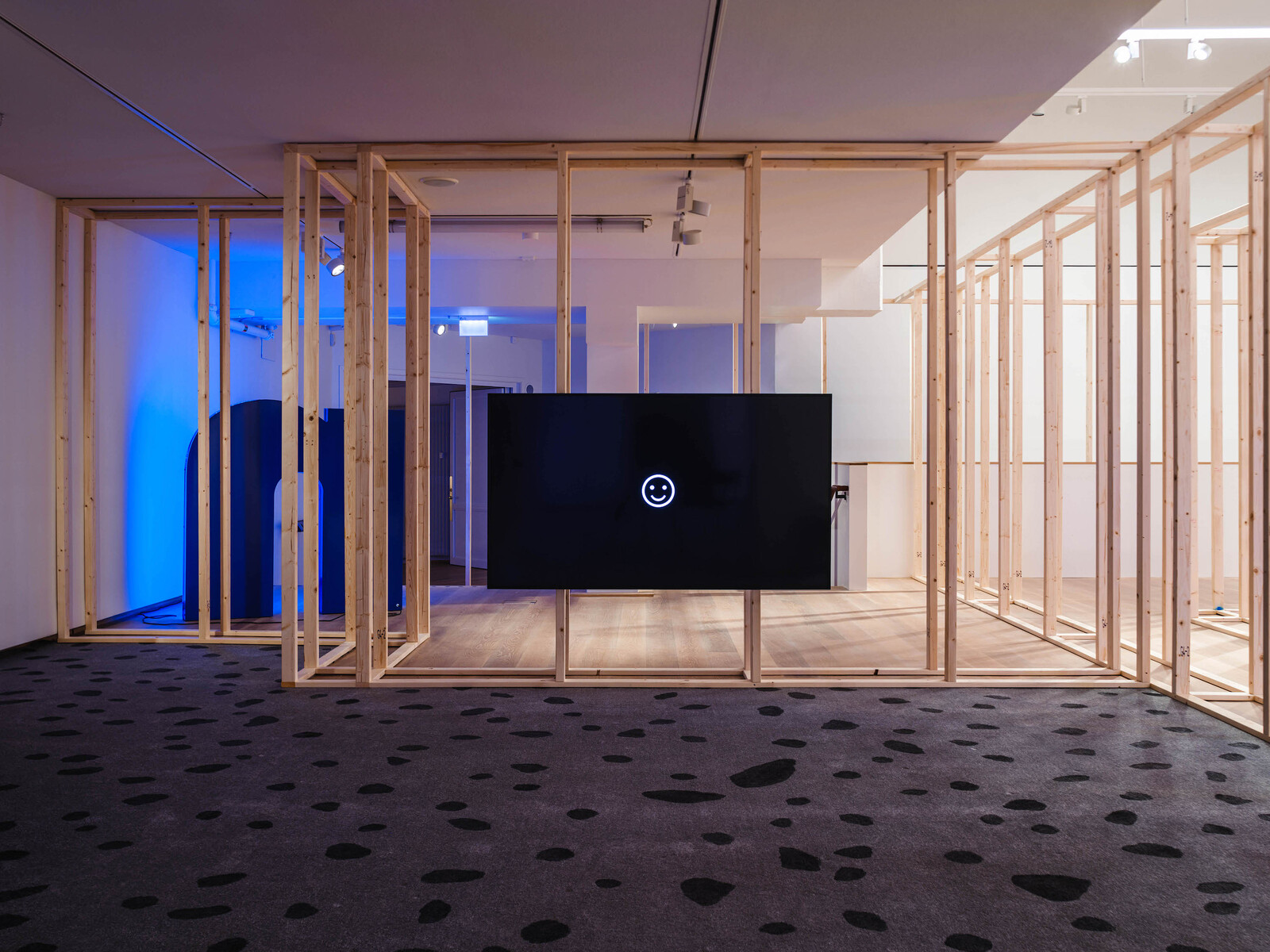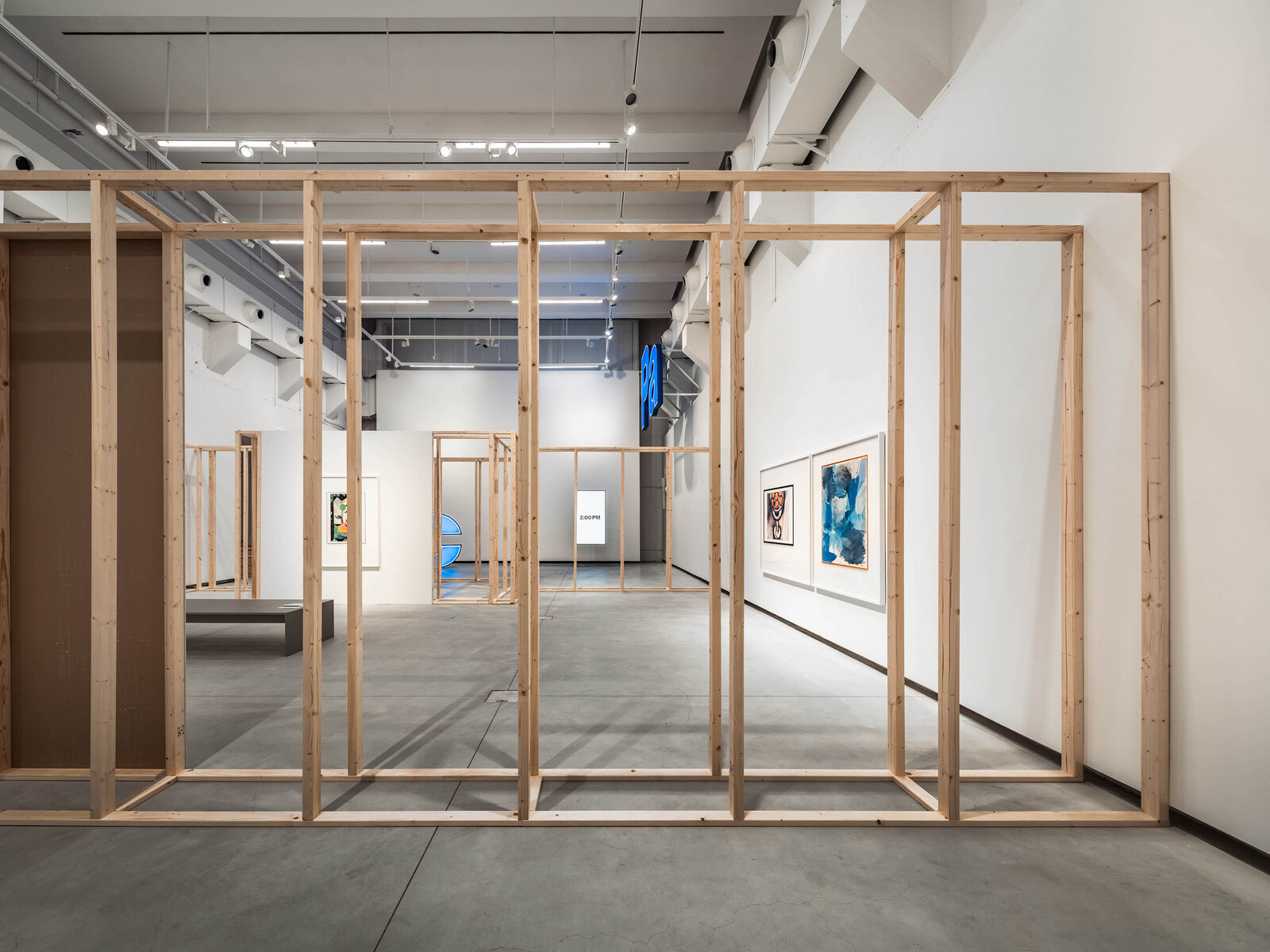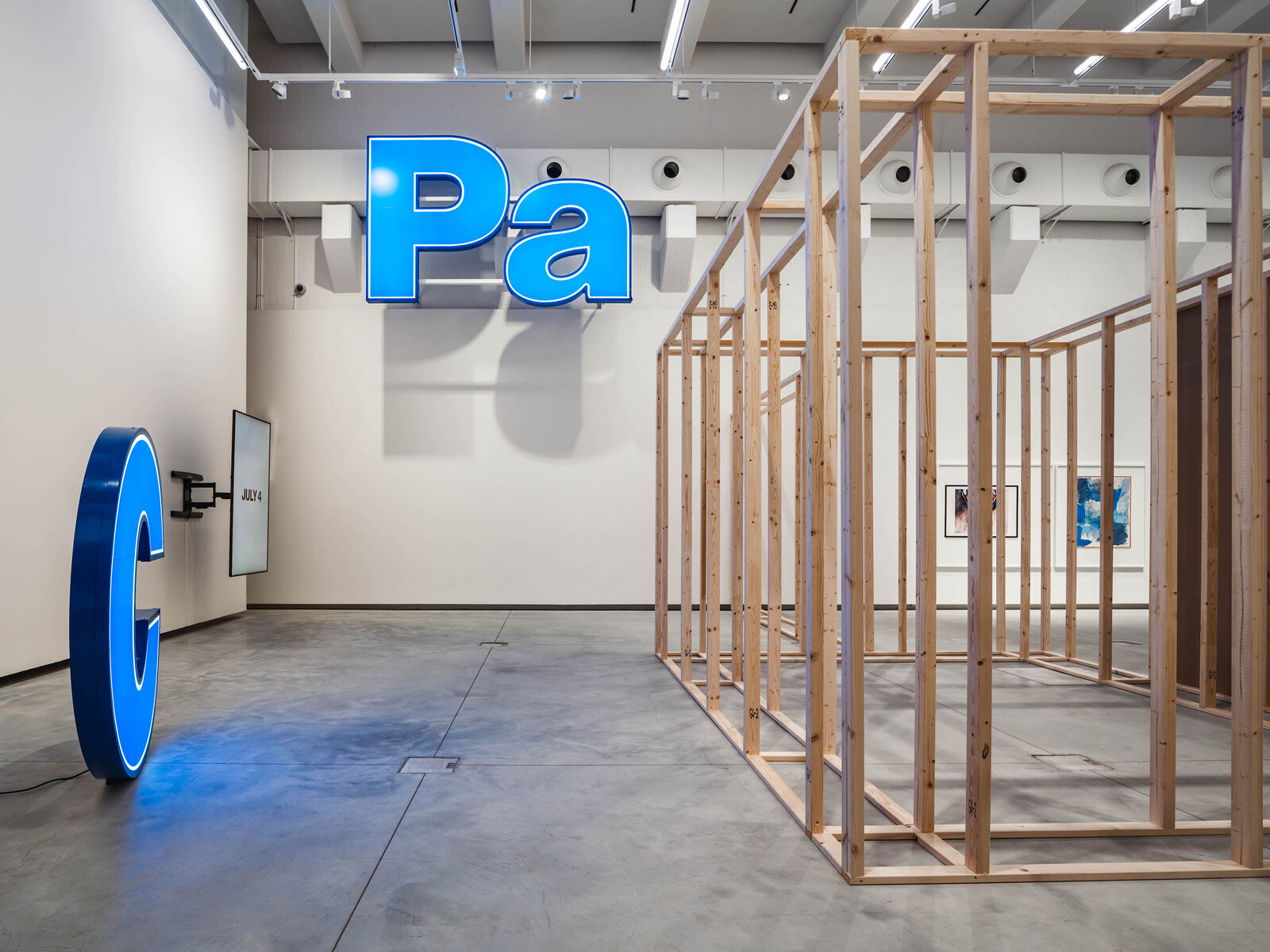Slicing through subterranean exhibition halls that were previously university laboratories for research in accelerator physics, Lisa Tan’s first institutional show in Sweden tenders its own spatial logic through the metaphor of neurological disorders. Visitors are received by an ink-drawn diagram based on Oliver Sacks’s 1970 sketch of “migraine and neighboring disorders” (from a book said to have been written over just nine days, aided by an undisclosed psychoactive substance). Here, the diagram is superimposed on a detailed schematic of the galleries: I enter the exhibition through “protracted vegetative reactions.”
Tan treats Sacks’s diagram as a tool, scaling it up to a dizzying and dysfunctional domestic space by way of partial walls which operate as spatial dividers, passages, atmospheric zones, and display environments. Rhythmic and austere, this site-specific installation of previous works lays bare the delicate negotiation between control and collapse on which our lives depend. As an organizing principle, Promise or Threat (2023) reveals how rooms are diagrams that shape the ways in which we interface with the world. We move like ghosts, seen and unseen, between spaces that give form to the inner self: the anxiety of a family dinner, the pressure of a deadline, the monotony of a commute. Despite its systemized order, Tan’s installation succeeds in situating a vague, unsettling doubt in the visitor’s own sense of self.
At the center of the exhibition—in an unlit lit space with a lower soffit that, according to Sacks’s diagram, represents the migraine proper—is Dodge and Burn (2021–23), a multichannel audio-visual installation that follows Tan’s successive attempts to film Fourth of July fireworks from the window of a plane descending towards Los Angeles airport. The “room” it occupies is grounded by a dim, speckled carpet which tempers the acoustics. The space feels more sensitive to light and sound, and less exposed (to other visitors, to the works), than other rooms; although the visitor remain visible and vulnerable, their focus is narrowed towards a single screen.
The narrative of Dodge and Burn is delivered in Tan’s own voice. On her first descent, she forgets to press record. Her friend, sat by another window, uses the wrong camera lens, and no fireworks are captured. The following July, Tan becomes engaged in conversation with a fellow passenger—a professional cuddle therapist—and the aircraft lands ahead of schedule. In her most recent attempt, in 2020, the plane takes another route over the city. Yet “through this evasion,” she notes, “another image of violence revealed itself.” What fireworks she did witness “were equally beautiful and disturbing; it looked like a warzone.” Referencing the LA neighborhoods in which a SWAT team was first deployed in a raid against the Black Panther Party, an election year “of extraordinary consequence,” and the threat of pandemic, the work shifts in tone as it unfolds. One scene, in which explosions play against a billowing US flag set in front of a setting sun, suggests the brutality of past and present, and the fragility of a nation.
Placed through the exhibition is the multi-part sculpture Pa (2023): totemic light boxes that emit a thin blue light and reference a multinational electronics company. Illuminating the oak floors and white walls, and visible at every turn, the sculpture lifts a form of applied commercial decoration—a “roadside duck,” in the words of Venturi and Scott Brown—and strips it of its value.1 (In a subliminal desire to unjumble the characters that make up the sculpture, the word “Pa-n-i-c” comes to mind.) Citing one of the only “billboards” in the city, it speaks to a Stockholmer with a splintered sense of déjà vu: in 2009, the Swedish artist Anna Odell staged a psychological breakdown, psychosis, and suicide attempt on a busy bridge beneath this billboard.2 She was taken to a psychological care ward and sedated before declaring the next day that it was her graduation work for the university where Tan is now a professor.3
This is an exhibition that gives away very little at first, demanding a prolonged visit—preferably alone. Although it appears uncompromising and disciplined—fastidious, even—it is witty, dour, at times absurdist, and gentle in its invitation. One work, Letters From Dr. Bamberger (2001–12), “a series of commissioned portraits” in the form of correspondence from Tan’s doctor spanning a decade of medical inquiry, embodies the detached, dry humor that characterizes the exhibition’s self-awareness. Sentences such as “you remain bothered by” and “you seem to be doing better” pepper statements about bad cholesterol, good cholesterol, and HDL levels. That we should preserve ourselves against psychological burnout may be one of the exhibition’s messages, but it provides only fragmentary, subjective clues on how to do so. Experienced in its totality, it suggests that there is joy, fear, uncertainty, and madness in every method of self-presentation or perception.
Denise Scott Brown and Robert Venturi, “On Ducks and Decoration,” Architecture Canada, vol. 45, no. 10 (October 1968), 48–49.
“Anna Odells fejkade psykos ställs ut,” Dagens Nyheter (May 12, 2009), https://www.youtube.com/watch?v=CUtF_gBt2Zg.
Anna Odell, Okänd, kvinna 2009-349701, 2009.
